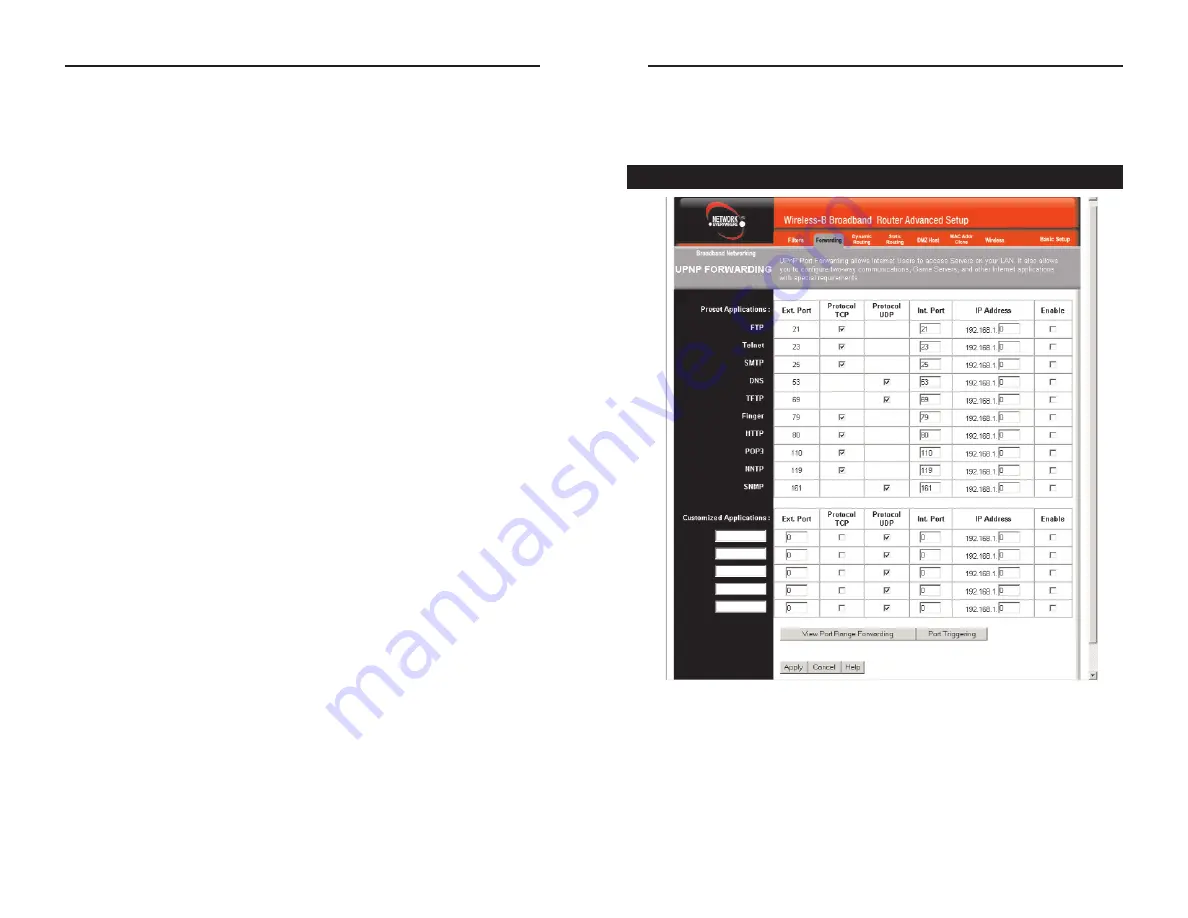
Wireless-B Broadband Router
31
Network Everywhere
®
Series
30
To apply any of the settings you’ve changed on this page, click the
Apply
but-
ton. To cancel any values you’ve entered on this page, click the
Cancel
button.
If you should need any further information about anything on this screen, click
the
Help
button.
UPnP Forwarding
Clicking the Forwarding tab will access the UPnP Forwarding screen, shown in
Figure 5-12. This screen displays preset application settings as well as options
for customization of port services for other applications.
Forwarding
Figure 5-12
Block WAN Requests
By enabling the Block WAN Request feature, you can
prevent your network from being “pinged,” or detected, by other Internet
users. The Block WAN Request feature also reinforces your network security
by hiding your network ports. Both functions of the Block WAN Request fea-
ture make it more difficult for outside users to work their way into your net-
work. This feature is enabled by default.
IPSec Pass Through
This feature lets you use IPSec Pass Through. IPSec
Pass Through is enabled by default.
To disable IPSec Pass Through, click on
Disable.
PPTP Pass Through
Point-to-Point Tunneling Protocol is the method used to
enable VPN sessions. PPTP Pass Through is enabled by default.
To disable this feature, click on
Disable
next to
PPTP Pass Through
.
L2TP Pass Through
This feature lets you use L2TP Pass Through. L2TP Pass
Through is enabled by default.
To disable this feature, click on
Disable
next to
L2TP Pass Through
.
Remote Management
This feature allows you to manage the Router from a
remote location, via the Internet. To enable this feature, click on
Enable,
and
enter the desired port number (default is 8080). Click the
Apply
button and
then the
Continue
button. Remote Management must be activated before you
can manage the Router from a remote location. If you wish to use this feature
on the browser, enter
http:\\<WAN IP Address>:8080.
(Enter your specific
Internet IP Address in place of <WAN IP Address>.) Remote Management
involves an inherent security risk and should not be enabled without first
changing the Password (from the Setup screen) from its default settings.
To disable this feature, click on
Disable
.
Use default MTU (Maximum Transmission Unit)
This feature specifies the
largest packet size permitted for network transmission. Select
Enable
and enter
the value desired. You should leave this value in the 1200 to 1500 range. Most
DSL users should use the value
1492
. For static and dynamic connections, the
default MTU value is set at
1500
when disabled. For PPPoE connections, the
default MTU value is set at
1492
when disabled.






















